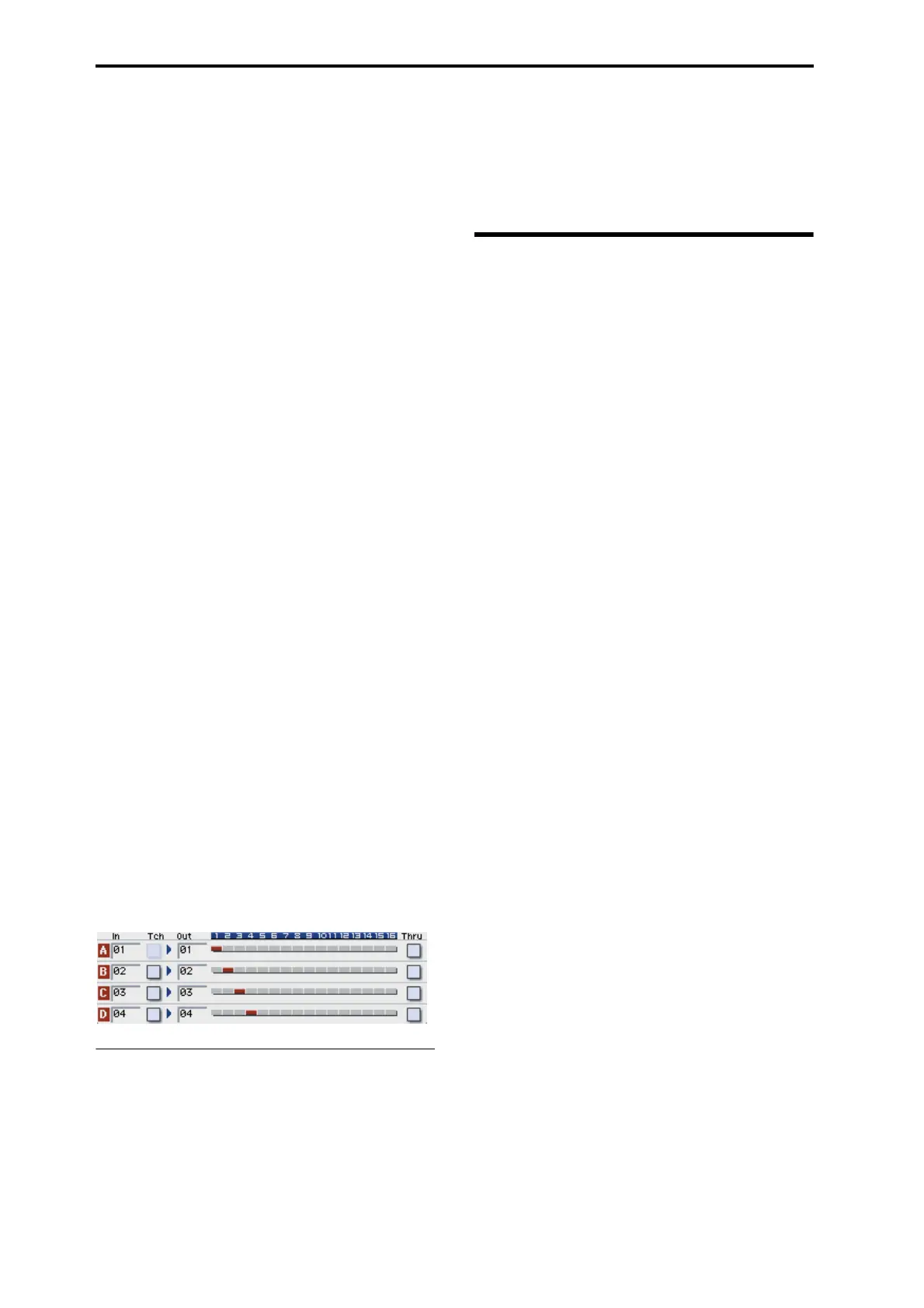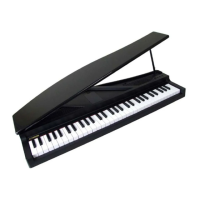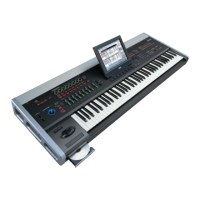Sequencer mode
246
GE Select: a riff of GE category Guitar
Input Channel: 01
Output Channel: 01
5. Set KARMA Module [B] as follows.
GE Select: a riff of GE category Bass
Input Channel: 02
Output Channel: 02
6. Set KARMA Module [C] as follows.
GE Select: a drum pattern (a pattern of GE category Drums)
Input Channel: Tch
Output Channel: 03
7. In Track Select, select T01: Track 01, and play the key-
board. (KARMA function on)
The Guitar riff of KARMA Module [A] will be sounded by
the Guitar type program.
Simultaneously, the drum pattern of KARMA Module [C]
will be sounded by the Drums program.
8. In Track Select, select T02: Track 02, and play the key-
board. (KARMA function on)
The Bass riff of KARMA Module [B] will be sounded by the
Bass type program.
Simultaneously, the drum pattern of KARMA Module [C]
will be sounded by the Drums program.
Track Thru (when KARMA Off) [Off, On]
As an exception, Track Thru specifies whether the MIDI
data that passes through the KARMA Module will be sent
(Thru) to the track when the KARMA ON/OFF switch is off.
Note: Input Channel and Output Channel settings are
normally valid only when the KARMA ON/OFF switch is
on.
On (checked): MIDI data that passes through the KARMA
Module will be sent on the Output Channel to the track
when the KARMA ON/OFF switch is off.
Off (unchecked): MIDI data that passes through the
KARMA Module will not be sent to the track when the
KARMA ON/OFF switch is off.
For examples of using this setting, please see “Thru (when
KARMA Off)” on page 162.
Module – Track MIDI Display
This shows the MIDI tracks that will be sounded by each
KARMA Module, according to the MIDI output channel
settings of each KARMA Module and the MIDI channel of
each track (Seq 3–1(2)c: MIDI Channel).
▼7–1–1: Menu Command
• 0: Memory Status ☞p.271
• 1: Panel–SW Solo Mode On ☞p.106
• 2: Exclusive Solo ☞p.107
• 3: Copy KARMA Module ☞p.114
• 4: Initialize KARMA Module ☞p.115
• 5: Copy Scene ☞p.115
• 6: Swap Scene ☞p.115
• 7: Capture Random Seed ☞p.116
• 8: FF/REW Speed ☞p.272
• 9: Set Location (Set Location for Locate Key) ☞p.272
• 10: Copy from Program ☞p.273
For more information, please see “Sequencer: Menu
Command” on page 271.
7–1–2: GE Setup B,
7–1–3: GE Setup C,
7–1–4: GE Setup D
These are the same as “7–1–1: GE Setup A.”
For more information, please see “7–1–1: GE Setup A” on
page 243.
